ZF Aftermarket product portfolio
ZF Aftermarket supplies OE quality clutches and clutch components designed for greater cost-effectiveness of CV clutch replacement or repair and added driver comfort.
The SACHS product portfolio
Release forks
SACHS release forks are the first choice of responsible commercial vehicle workshops and fleet operators looking for a cost-effective solution. The use of SACHS products allows you to effectively avoid early failures of the driveline and thus prevent expensive downtimes.
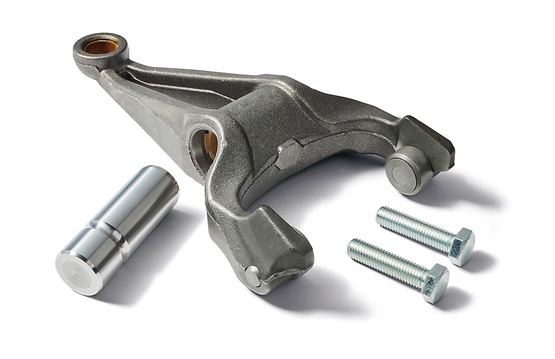
How does a clutch release fork work? The release fork is largely responsible for the functioning of a clutch. When a release fork functions properly, it transmits the release force from the clutch booster to the release bearing. Because of the permanent load on the fork, it is naturally prone to wear and tear. This is why top material and processing quality are extremely important in a release fork.
SACHS release forks for CV are...
- always state of the art
- manufactured in OE quality
- extremely durable
- available for all common commercial vehicle models
- quick to install thanks to the practical assembly kit

SACHS does not only offer better quality and expertise, they also provide best-in-class service and, therefore, offer the SACHS clutch release fork in a practical assembly kit. The kit includes all necessary components for installation, such as shafts, seals and screws, enabling a simple and time-saving assembly.
On top of that, the professional logistics of ZF Aftermarket with its comprehensive service network of 650 partners worldwide ensures very short delivery times.

Dual mass flywheel
Modern engines can be driven at extremely low engine speeds and generate increasingly high torques. At the same time, components are becoming ever more lightweight to save fuel. These and other technical optimizations in trucks increase noise and reduce natural damping. The SACHS CV dual-mass flywheel (DMF) transmits the engine torque to the clutch pressure plate and the clutch disk. It decouples vibrations otherwise transferred from the engine to the driveline, effectively preventing rattling and humming noises. For the driver, this means the highest level of shifting and driving comfort.The CV DMF offers a wide range of advantages. They include high noise quality with reduced fuel consumption, excellent vibration damping across the entire speed range, effective transmission and clutch protection and optimal start-stop behavior, as well as a long service life and reduced installation space requirements.
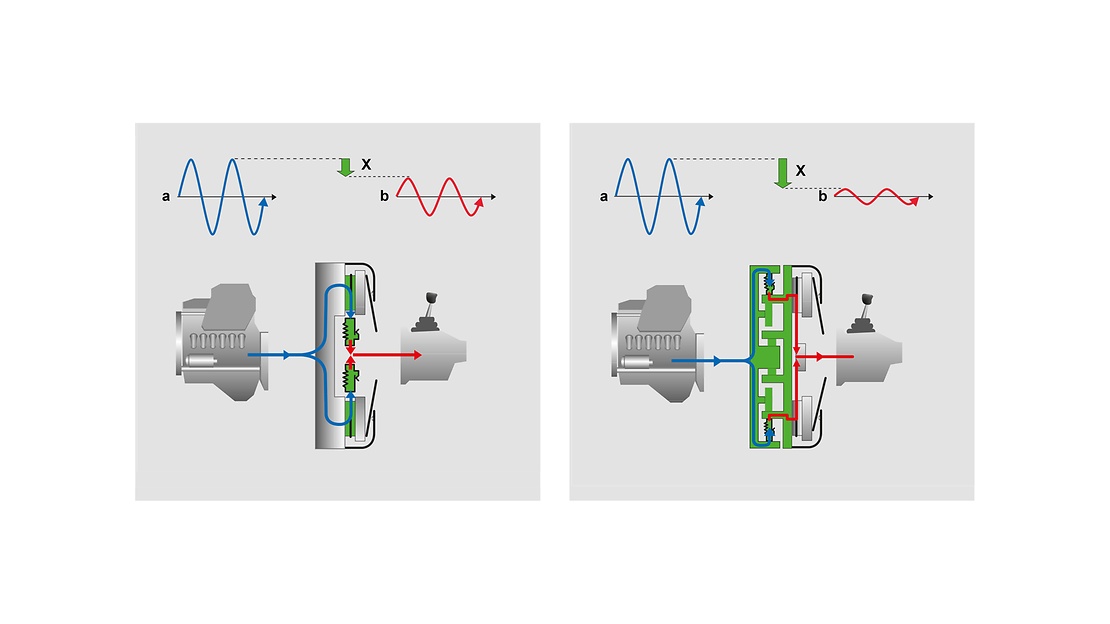
SACHS CV dual-mass flywheels are designed so that engine vibrations are largely reduced in all speed ranges. SACHS engineers develop truck dual-mass flywheels according to the specifications of the vehicle manufacturers.
The following diagrams show the improved vibration characteristics when using a SACHS dual-mass flywheel. (a: engine vibrations, b: transmission vibrations, X: damping)
Compared to rigid flywheels, the DMF effectively reduces torsional and engine vibrations to increase ride comfort. Buses today are often equipped with dual-mass flywheels since both drivers and passengers benefit from its advantages. SACHS is the only brand that offers dual-mass flywheels for buses in OE quality for the aftermarket. Usually, however, trucks have been equipped with rigid flywheels up to now. Apart from rigid flywheels, SACHS also offers dual-mass flywheels for passenger cars and light commercial vehicles.
What is the function of the dual-mass flywheel for trucks?
The truck DMF transmits the engine torque to the clutch pressure plate and the clutch disk. Its primary purpose is to isolate the torsional vibrations generated in the engine, preventing them from passing into the driveline.
Why is it a good idea to use a truck DMF?
The current engine technology places higher and higher demands on clutch systems and the entire driveline. Consumption-optimized truck engines, such as diesel and gasoline engines using direct injection, already develop high torque at low speeds. The usable engine speed range is additionally reduced towards the idling speed level to enable fuel-efficient and low-emission driving. This increases the combustion engine’s rotational irregularities. For the driveline and driver, this means increased vibrations, increased noise and reduced comfort. This is where the DMF comes in as a powerful torsional vibration isolator. It helps protect the driveline against harmful vibration and ensures low-noise and comfortable driving.
Where is the DMF installed in the truck?
The SACHS dual-mass flywheel is installed between engine and transmission, together with the clutch pressure plate and the clutch disk.
How does the SACHS dual-mass flywheel for trucks work?
The flywheel is divided into a primary and a secondary mass. An extremely powerful multi-spring damping system is installed between the two masses.
Effective compression springs with a multi-stage characteristic curve design ensure optimal vibration isolation.
What are the benefits of the truck DMF made by SACHS?
The SACHS DMF offers numerous advantages, such as optimal vibration isolation across the entire speed range, individual adaptation to the vehicle design, effective noise reduction, smooth setting-off behavior, great shifting and driving comfort, protection of the transmission, excellent start-stop behavior, long service life, reduced installation space requirements, possible pull-type and push-type clutch actuation as well as fuel economy thanks to reduced consumption because vehicles can be operated at lower rpm levels.
How can I test a truck DMF?
A DMF can only be tested on a special test bench for dual-mass flywheels. The workshop can only perform a visual inspection. The visual inspection, however, – similar to the tests on the test bench – only provides a snapshot. The assessment of such an inspection requires a great deal of expertise.
How often should the truck DMF be checked/replaced?
The dual-mass flywheel should be inspected each time the clutch is replaced. If the clutch has already been replaced once, the dual-mass flywheel should be replaced in any case.
SACHS ConAct
In addition to pressure plates, clutch disks and flywheels, SACHS also offers high-quality release systems for buses and trucks – with the pneumatic clutch actuation system SACHS ConAct leading the way. It ensures maximum ease of operation with particularly low wear when engaging and disengaging the clutch as well as when switching gears.

As an automated clutch actuation system, it effectively reduces strain on the driver, increases convenience greatly and can be easily integrated into electropneumatic driveline management.
The advantages of SACHS ConAct are both diverse and compelling. It protects the clutch and transmission gear for gear, thus increasing their service life, and activates whenever a gear is shifted. The other advantages of the release system lie in the actuation of clutches for up to 3,200 Nm motor torque and in reducing the interfaces outside the transmission. The pneumatic clutch actuator simplifies the assembly of the clutch thanks to its streamlined design. In addition, maintenance costs are reduced due to the elimination of hydraulics and lower system weight.
The ConAct pneumatic clutch actuator contains a release cylinder, which is positioned concentrically around the transmission input shaft and replaces the widespread fork actuation with clutch booster, fork and clutch release bearing.
SACHS ConAct is suitable for fully automatic systems and clutch-by-wire applications. In automated transmissions, the system automatically determines the engine and transmission speed data from the CAN bus. From the accelerator pedal position, conclusions can be drawn regarding the optimal releasing position. This works even in demanding driving situations such as maneuvering, launching and shifting on hills with a heavy load or on a slick road. Driven by the vehicle electronics, the solenoid valve controls the clutch actuation system.
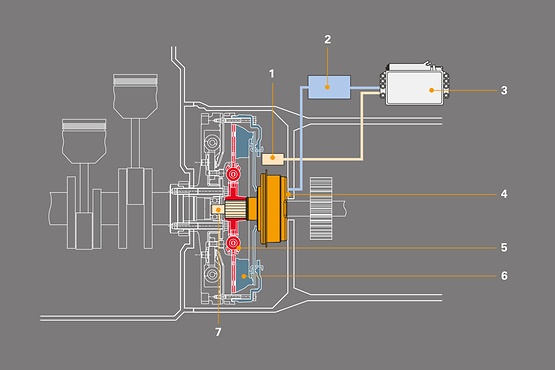
1. Travel sensor
2. Electropneumatic control valve
3. Transmission or vehicle electronics
4. ConAct® release cylinder
5. Clutch disk
6. Pressure plate
7. Transmission input shaft
Fan clutches
In addition to pressure plates, clutch disks and flywheels, SACHS also offers high-quality release systems for buses and trucks – with the pneumatic clutch actuation system SACHS ConAct leading the way. It ensures maximum ease of operation with particularly low wear when engaging and disengaging the clutch as well as when switching gears.
At low or regular engine loads, the cooling airflow produced during driving is normally sufficient to dissipate heat from the radiator and work as an engine cooler. In this case, the fan runs at a slow rate or is switched off completely. If the load increases and the vehicle speed drops – e.g. when climbing a hill – there is a risk of heat accumulation due to engine overheating. Thus, the CV fan clutch is engaged to ensure that sufficient air flows through the radiator. The viscous clutch ensures that the fan speed is automatically adjusted to the level necessary to cool down the engine. This reduces both fan noise and fan power consumption, with the pleasant side effect of saving fuel.
Find all products in the online product catalog.
Bimetal activated viscous clutch for CV
- The fan clutch operates in accordance with the airflow temperature behind the radiator
- The temperature on the outgoing air from the radiator is used to control the fan
- This version is used on passenger cars and small to medium-sized commercial vehicles.
Electronically controlled cooling fan clutch for CV
- The vehicle computer receives signals from the engine management sensors and the temperatures at the radiator, charge-air-intercoller/ exhaust cooler, oil cooler etc. and uses them to control the fan clutch
- This version is used for heavy commercial vehicles and agricultural vehicles.

Airflow (X) is still cold
If the airflow (X) is still cold, the valve is closed and all the oil (red) is in the reservoir (a). The rotor (b) revolves in the housing (c) but is not driven. The fan is either stationary or turns slowly because of slight residual torque.
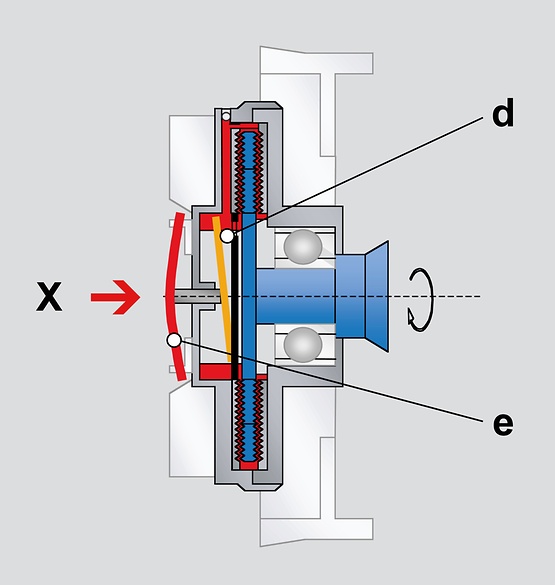
Airflow (X) temperature rises
However, if the airflow (X) temperature rises, the bimetallic strip (e) or solenoid opens the thermal valve (d), causing the oil (red) to flow into the space between the fan blades and the housing. This results in a power transmission, by which the rotor accelerates the speed of the housing and thereby of the cooling fan. A full-scale, adequate supply of cooling air is thus provided for.
SACHS clutch systems for buses
Bus clutches
Clutches for buses are subject to particularly stringent requirements regarding reliability, efficiency and comfort. The SACHS product range includes state-of-the-art quality clutches for different types of buses, meeting these requirements with flying colors. SACHS clutch disks for buses are specifically adapted to the engine and driveline. In addition, SACHS offers practical clutch kits for buses, guaranteeing uncomplicated replacement.
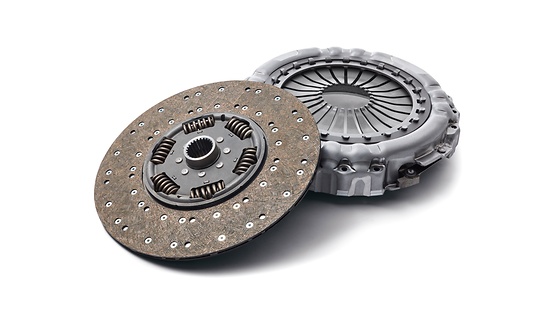
The clutch is located between the engine and the transmission. It is an essential component of the driveline and one of the most heavily stressed components. For this reason bus clutches from SACHS are designed and manufactured to withstand high loads even on a permanent basis. They ensure comfortable driving, smooth shifting and optimum safety of drivers and passengers. Their exceptional durability helps to prevent unnecessary downtime.

High payloads, numerous passengers and difficult routes – buses face many challenges. City buses bring passengers from A to B in stop-and-go traffic on a daily basis, and coaches need to cover long distances on surfaces that are often difficult. This makes it particularly important for you to be able to rely on the clutch.
SACHS clutches for buses are manufactured exclusively from high-quality materials and always reflect the state of the art. This makes them particularly durable and reliable.
The practical SACHS clutch kits for buses enable the workshop to make replacements quickly and without complication. They contain all the components required for replacement: the pressure plate, the clutch release bearing and the clutch disk for buses. In addition, in all installation kits there is a special grease which is applied after assembly. It ensures perfect functioning of the bus clutch. SACHS clutch kits are available not only for buses but also for other vehicles such as passenger cars, vans and commercial vehicles.
Dual-mass flywheel for buses
Clutches for buses are subject to particularly stringent requirements regarding reliability, efficiency and comfort. The SACHS product range includes state-of-the-art quality clutches for different types of buses, meeting these requirements with flying colors. SACHS clutch disks for buses are specifically adapted to the engine and driveline. In addition, SACHS offers practical clutch kits for buses, guaranteeing uncomplicated replacement.

Coaches and city buses must run reliably and economically while simultaneously offering drivers as well as passengers the highest level of travel comfort. It is precisely such comfort that is made difficult by the down-speeding of the engines: They can be operated at extremely low speeds and generate increasingly high torques. At the same time, components are weighing less and less to save fuel.
These and other technical optimizations increase noise and reduce natural damping. This is where the SACHS dual-mass flywheel comes in. It is specifically designed to reduce engine vibrations in all speed ranges, thus offering optimal comfort.

The SACHS dual-mass flywheel ensures the highest shifting and ride comfort; the version designed for coaches and city buses transfers the engine torque to the clutch disk and the clutch pressure plate. In the process, it isolates the driveline from the vibrations generated in the engine. Reducing the vibrations in the bus effectively prevents rattling and humming noises.
The dual-mass flywheel is so effective that 80% of all buses are already being equipped with it.

The SACHS dual-mass flywheel for coaches and city buses is designed to considerably reduce torsional vibrations. In fact, SACHS engineers designed it specifically to meet vehicle manufacturer requirements.
The following diagrams show the improved vibration characteristics when using a SACHS dual-mass flywheel. (a: engine vibrations, b: transmission vibrations, X: damping)
Compared to rigid or simple flywheels, the DMF effectively reduces torsional and engine vibrations for increased ride comfort. That is why dual-mass flywheels are not only installed in buses, but also in other vehicles. SACHS also offers, for example, a high-quality DMF for passenger cars and transporters. Until recently, it is mostly rigid or simple flywheels that have so far been used in trucks, but thanks to the high-quality truck DMF from SACHS ,dual-mass flywheels are also being used increasingly in this segment.

As a drive component in the bus, the SACHS DMF offers various advantages:
- Low noise emissions
- Low fuel consumption
- Reduced transmission loads
- Improved shift comfort
- Optimal launch and stop behavior
- Long service life
- Low installation space requirements
- For clutches up to Ø 430 mm
- Available for engine torques exceeding 3,500 Nm
What is a dual-mass flywheel for buses and what does it do?
The DMF transmits the engine torque to the clutch pressure plate and the clutch disk. Its primary purpose is to isolate the torsional vibrations generated in the engine, preventing them from passing into the driveline. The DMF is therefore one of the important drive components in coaches and city buses.
A dual-mass flywheel is made up of what components?
The dual-mass flywheel consists of a primary flywheel, secondary flywheel, rotating plain bearing and coupling coil springs.
Why is it a good idea to use a dual-mass flywheel?
The current engine technology places higher and higher demands on clutch systems and the entire driveline. Consumption-optimized engines already generate high torque at low speeds. The usable engine speed range is additionally reduced towards the idling speed level to enable fuel-efficient and low-emission driving. This increases the combustion engine’s rotational irregularities. For the driveline, driver and passengers, this means increased vibrations, increased noise and reduced comfort. The SACHS bus DMF steps in here to powerfully isolate the vibrations, which helps protect the driveline against harmful vibration and ensures low-noise and comfortable driving.
Where is the DMF installed in the bus?
The SACHS dual-mass flywheel is installed between engine and transmission, together with the clutch pressure plate and the clutch disk. The axial installation space requirement for a DMF with clutch corresponds to that of a twin plate clutch so that it can usually be integrated into an existing driveline configuration.
How does a DMF function?
The dual-mass flywheel function effectively reduces noise. The flywheel is divided into a primary and a secondary mass. A highly-efficient, grease-filled spring damping system functions between both of the masses. This means the resonance speed of the dual-mass flywheel is below the idling speed of the engine, which is different from a conventional clutch disk that has a torsional vibration damper. Effective compression springs with a multi-stage characteristic curve design ensure optimal vibration isolation in the bus.
What are the benefits of the bus DMF from SACHS?
The SACHS bus DMF offers numerous benefits, such as optimal vibration isolation across the entire speed range, customized modification to the vehicle design, effective noise reduction, smooth setting-off behavior, great shifting and ride comfort, protection of the transmission, excellent start-stop behavior, long service life, reduced installation space requirements and efficiency through reduction of fuel consumption because vehicles can be operated at lower rpm levels.
How can I test a bus DMF?
A DMF can only be tested on a special test bench for dual-mass flywheels. The repair shop can perform only a visual inspection, which, however, – like the tests on the test bench – just provides a snapshot. Assessing such an inspection requires a great deal of expertise.
How often should the bus DMF be checked/replaced?
Inspect the dual-mass flywheel each time the clutch is replaced. If the clutch has already been replaced once, then also replace the dual-mass flywheel.



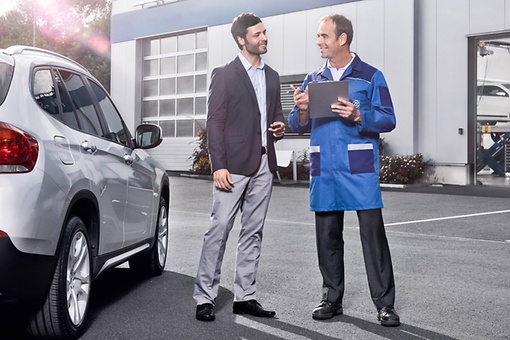
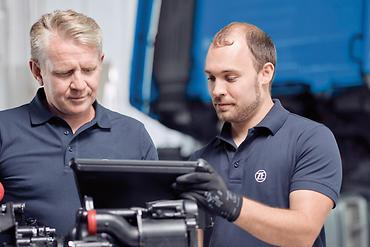
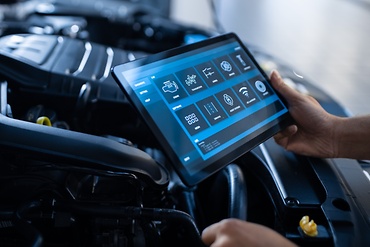
![ZF [pro]Academy ZF [pro]Academy](/media/master/service-images/zfa_pc_training_img_clutch-centering-tool-01_wxh_cmyk_2017-11_un-progressive_bs_32_xl_4.jpeg?v=1125971310)